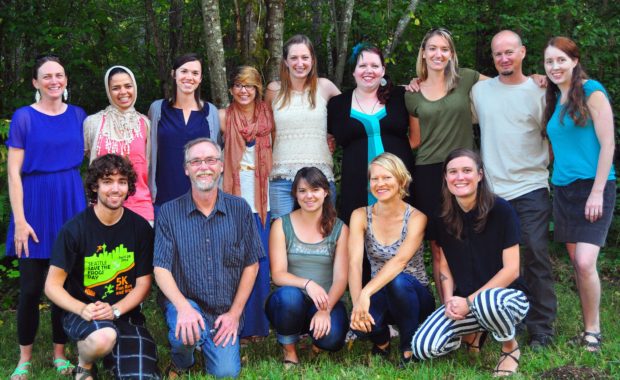By Joey Burgess, Prairie Conservation Nursery Coordinator, Stafford Creek Corrections Center
Drissia Ras served as Conservation Nursery Coordinator at Stafford Creek Corrections Center from 2012-14 while completing her Master of Environmental Studies degree at Evergreen—the same position I am in now. For Drissia, performing weekly educational workshops and lectures was the most important aspect of her work. She believed that education was crucial to the transformation of this vulnerable population into valuable members of society with a future. She also appreciated the hours spent getting her hands therapeutically dirty while cultivating prairie plants. It was a much-needed break from academic endeavors.

Staff photo from https://friendlywater.net/ABOUT.
During coursework for Drissia’s Master’s degree, she found herself in Yakima County working with farmers, county officials, and other stakeholders on preserving water quality in local watersheds. A representative from a non-profit organization, Friendly Water for the World, was also involved. They invited her to embark on a research project to evaluate the performance of a household water filter, BioSand, for removing arsenic, and this became the subject of her Master’s thesis. She found that the water filter was extremely effective at removing arsenic, a valuable finding for applications of the technology in developing communities. Following graduation, Drissia continued to work with Friendly Water for the World, and became their Administration & Operations Director.
Drissia says her experiences from SPP serve her well in her current work. She appreciated the openness and flexibility that her supervisors provided; it meant she could get the experience she needed. SPP’s management style was perfect for her. She was guided effectively, and empowered to develop project-management and personal skills. Working in a prison with Department of Corrections staff, she expanded her communication skills in ways that now help her establish and maintain relationships with global partners.

Bri Morningred, Jaal Mann, and Drissia Ras, all three prairie conservation nursery coordinators, smile during an SPP celebration in 2013. Photo by SPP staff.
For the future, Drissia plans to continue working with non-profit organizations. Although she recognizes that every organization is distinct and dynamic, she finds SPP especially unique because of the network of partnerships it has formed. She hopes to implement a similar networking strategy into her future work with marginalized populations.














 Graduation brings an end to student-staff employment. Each coordinator trains their successor, which is as much about introducing them to the culture and ways of thinking as it is about program policy and protocols. Each turnover is bittersweet. We have to say good-bye to someone we have relied on and invested in, and it is painful to see them go.! At the same time, we get to welcome someone new, and their fresh perspectives helps SPP to continually improve; we can’t get stale! Also, there is the satisfaction of seeing SPP alumni go on to new and valuable endeavors, and we take pride in supporting their ongoing careers and aspirations.
Graduation brings an end to student-staff employment. Each coordinator trains their successor, which is as much about introducing them to the culture and ways of thinking as it is about program policy and protocols. Each turnover is bittersweet. We have to say good-bye to someone we have relied on and invested in, and it is painful to see them go.! At the same time, we get to welcome someone new, and their fresh perspectives helps SPP to continually improve; we can’t get stale! Also, there is the satisfaction of seeing SPP alumni go on to new and valuable endeavors, and we take pride in supporting their ongoing careers and aspirations.

















